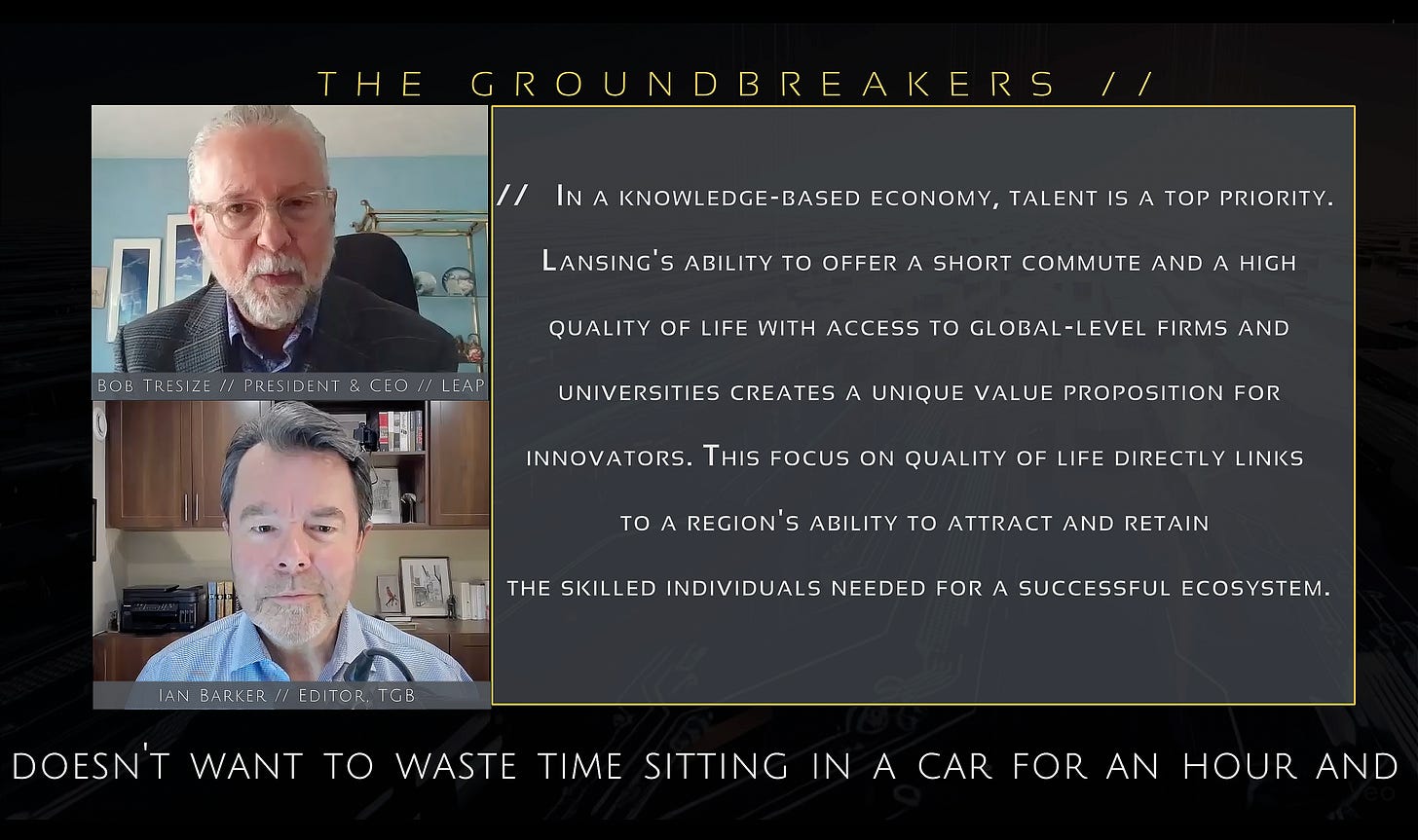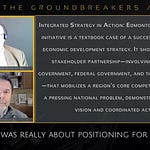Where matters
Innovation is vastly more than a buzzword pasted into boilerplate pitch decks or a term to nod at during weekly conference calls. It is a transformative, global force. Innovation is baked into every decision we make, individually and collectively. We all make the implicit assumption that virtually every aspect of our lives will advance in positive ways—either fundamentally or at the margins—given time and resources. This is more true now than at any time in history.
But where will that next innovation take place? Real, tooth-and-nail competition between communities, regions, and among nations is unrelenting. That competition extends into the geopolitical realm as trading blocks and alliances jostle for advantage. Someone, somewhere, will own each innovation, mining and multiplying its benefits for the surrounding area in terms of jobs, infrastructure, economic resiliency and quality of life. Where matters.
Get in the game
Competition produces its winners and losers but, setting aside geopolitics for the moment, innovation is far from a zero-sum game. If it was, Silicon Valley would own 100% of everything, no other place would invent, create, or build anything new. In reality, every place has its own innovation ecosystem. In the context of accelerating global competition, the extent to which places invest time and energy into building their ecosystems matters disproportionately, regardless of their stage of development. This is observably true: once upon a time Silicon Valley amounted to Bill Hewlett and David Packard working out of a garage in some place called Palo Alto, not far from the little university of Stanford and their mentor and professor, Frederick Terman.

The obvious rejoinder to my argument is that the sedate pace of 1930s California isn’t the 24/7 uber-connected 2020s. Immense investments in specialized scientific, business and technical infrastructure accrued over the course of decades combine to create insurmountable advantages that only expand as specialized know-how, fuelled by vast sums of capital and network effects, rapidly produce successive waves of innovation, creating an irresistible vortex pulling in the best of the best from every other place.
There’s no catching Silicon Valley goes this line of thinking, and the case is strong. But again, we’re not in a zero-sum game. Paris, London-Cambridge, Seoul, Tel Aviv, and Toronto-Waterloo are growing epicentres in their own right. China, more adversarial today than it’s been for decades, has in Beijing and Shanghai its own major pieces on the board.

The point is that winning is possible. It can be done, it is being done. There are tools at our disposal, locally, to harness social, demographic, and technological change to our benefit, to claim a share of future innovations as our own with all of the ensuing regional economic benefits.
Which brings me to the video and my interview with Bob Tresize, President and CEO of Lansing Economic Area Partnership (LEAP).
Lansing Economic Area Partnership (LEAP)
Bob was very generous with his time and provided great insight. The following quote is so good, in my opinion, that I’m worried I buried the lede:
We each get a 20 to 25 year window to make a difference as individuals and as organizations. And I always believe it's really important to understand that moment in time that you are in. It is unique and you have to understand your place and space as a community and the personalities and people that are happening within that framework of you, of who you are.
Bob Tresize, President & CEO of Lansing Economic Area Partnership (LEAP)
It’s all right there. An understanding of time, place, context, and action.

While Part One is more of a “get to know,” you’ll quickly hear some of what makes Lansing distinct and from where many of its advantages stem. For insiders, the historical shift in economic development priorities over the course of time will be familiar. But the underlying idea that those shifts are driven by local adaptation to common outside forces of change is, to me, fascinating and serves to make the point that local uniqueness is a competitive force in its own right, and one capable of harnessing external forces to local advantage.
That leads to into to Part Two—publishing next week—where we get into more of the specifics of the Lansing’s innovation ecosystem engine, and what makes it tick.
On that note, I hope you like the video, and please feel free to reach out with your thoughts and suggestions.








